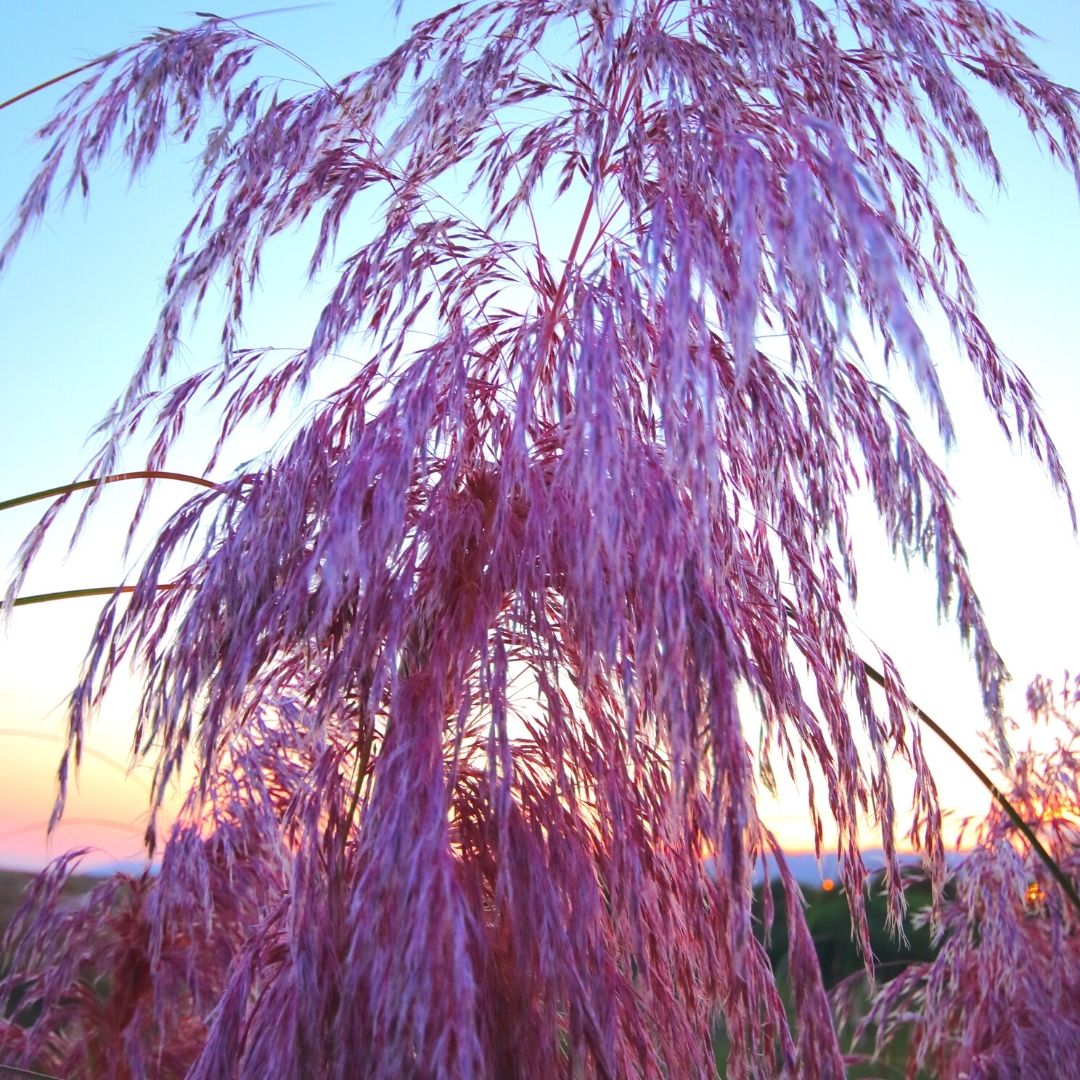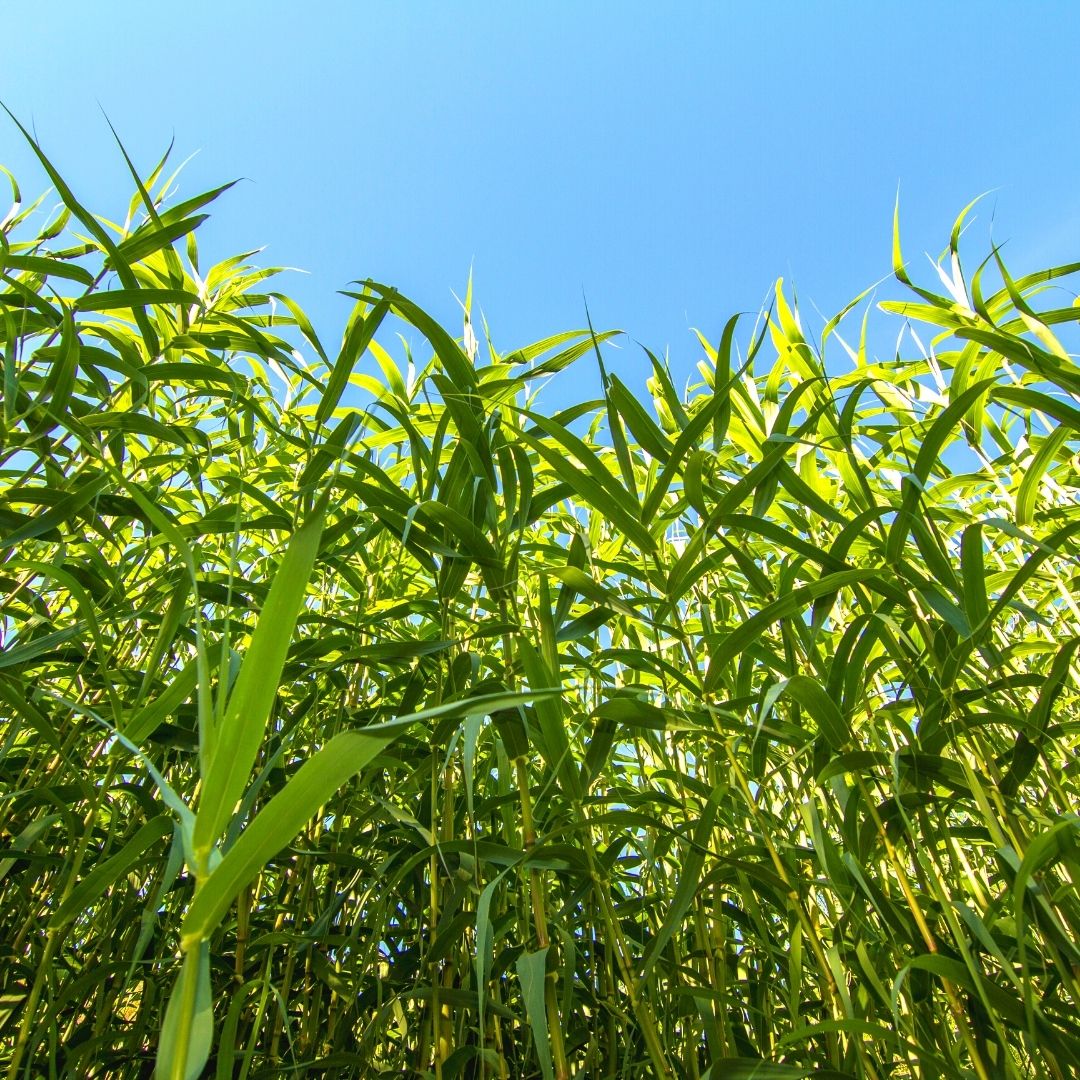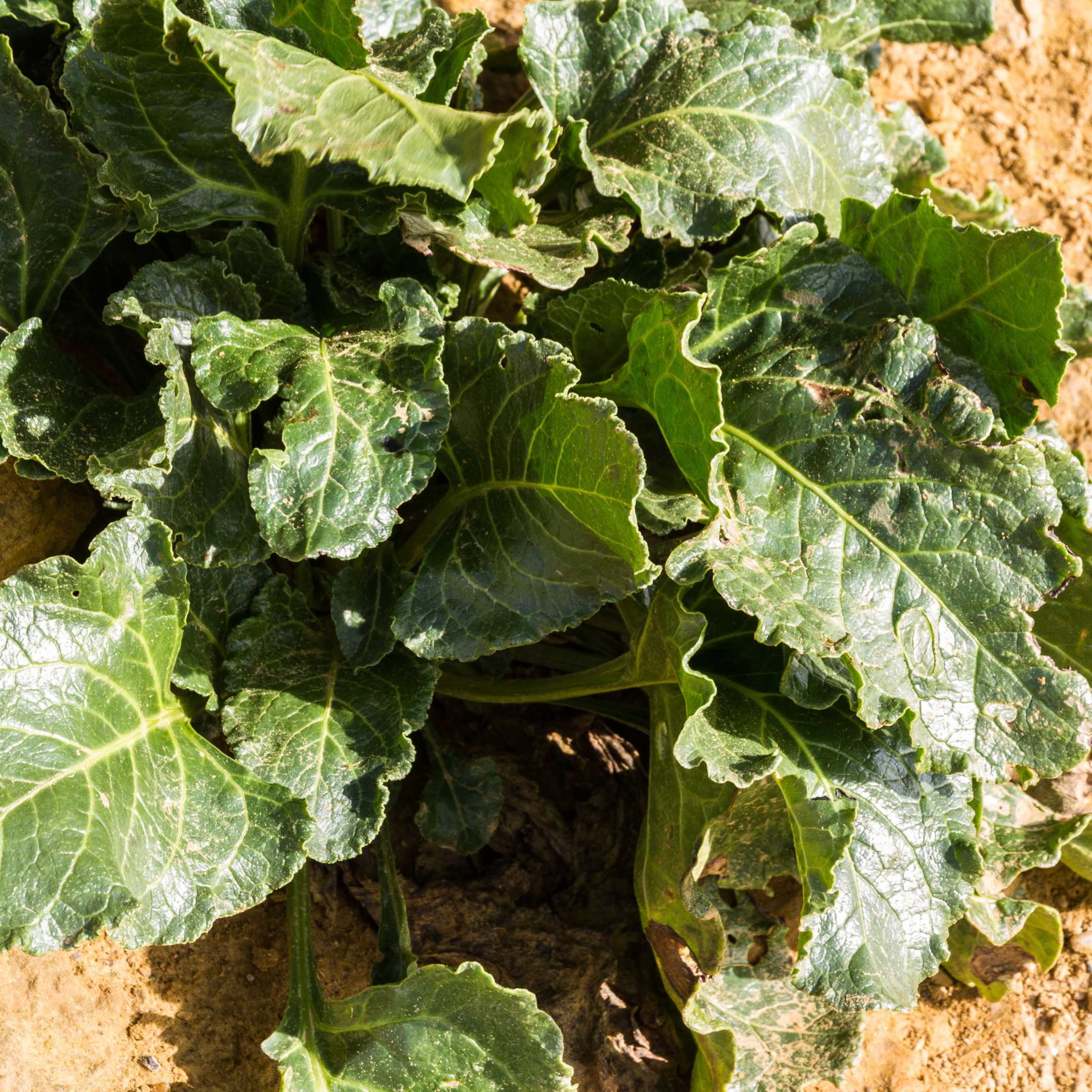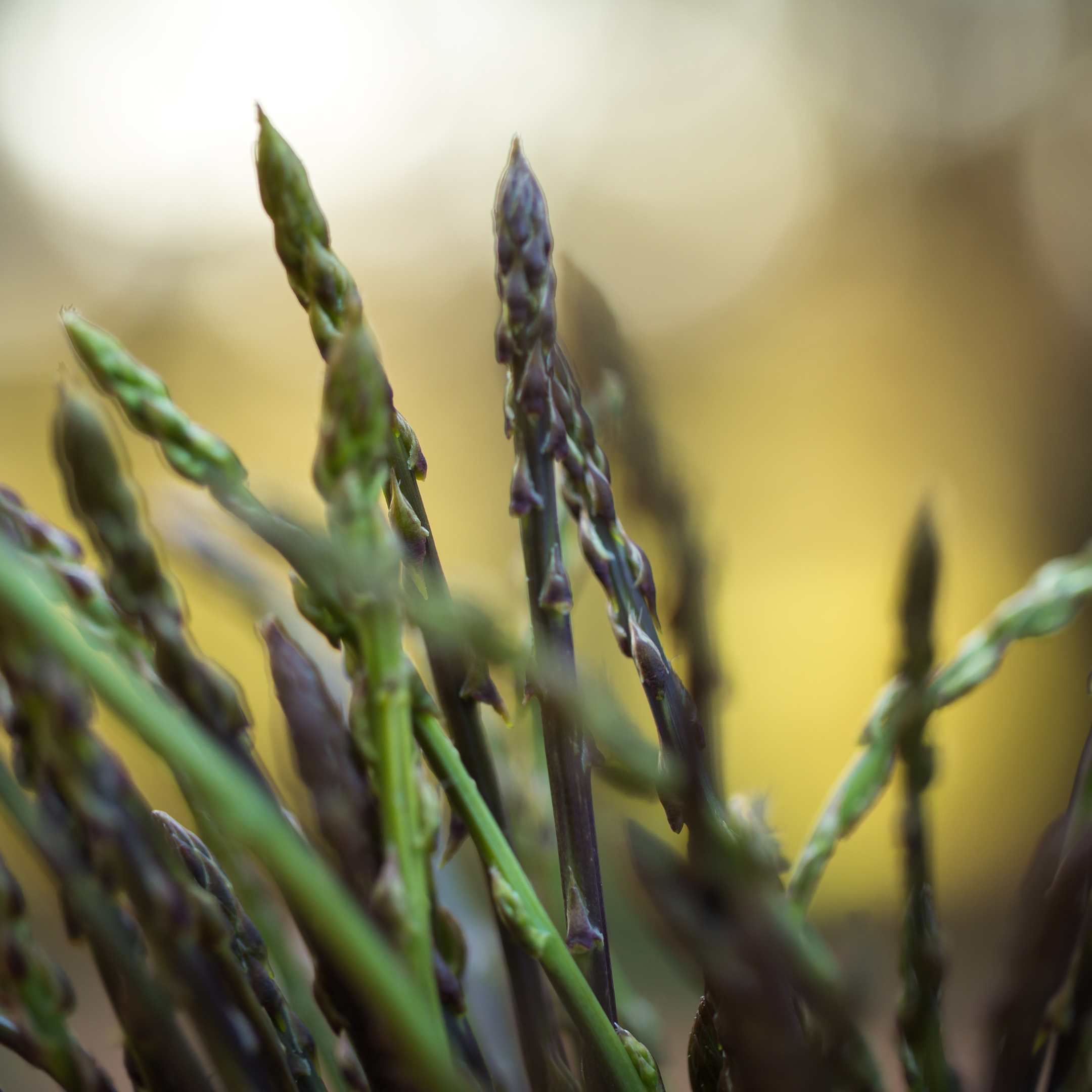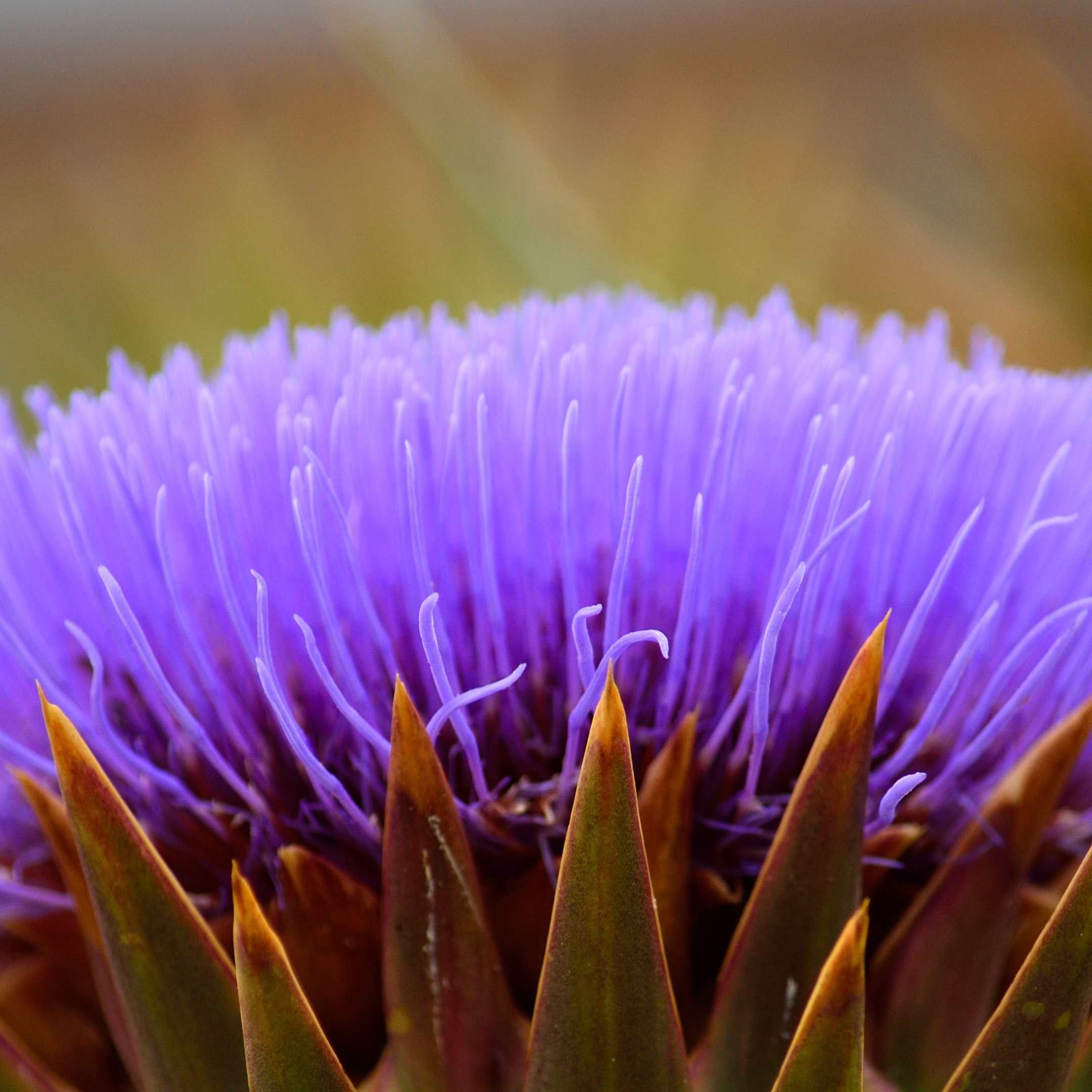Did you know that Giant Cane is decocted in Ayurvedic medicine and is perfect for weaving baskets?
Author of, Weeds For Health On Gozo, Heléna Szöllősy shares everything you need to know about the wild plants that make up Gozo’s unique and diverse flora. Enjoy learning about the healing benefits and many usages of Giant Cane which flowers in late summer.
Giant Cane, Gozo
Arundo donax- L
Botanical Name: Arundo donax- L. Family Name: Arundienae Maltese Name: Ġgiant qasab, Qasba kbira Common Names: Arundo, Carrizo, Colorado River Reed, Giant reed, Giant Reed Grass, Spanish cane. Wild cane Meaning of the Name: Arundo, a reed, cane, donax, donakos from Greek, for a kind of reed.
DESCRIPTION
Giant cane is a perennial growing from 6 m x 4m but can exceed 10 metres in ideal conditions. With hollow stems and leaves that are alternate, (30 to 60 centimetres long and 2 to 6 centimetres wide) it has a grey-green tapered tip and a hairy tuft at the base. Giant cane flowers in late summer, bearing upright, feathery plumes 40 to 60 centimetres long that are usually seedless or with seeds that are rarely fertile. Instead, it mostly reproduces vegetatively, by underground rhizomes. The rhizomes are tough and fibrous and form knotty, spreading mats that penetrate deep into the soil up to 1 metre deep.
- Habitats: It forms dense stands on disturbed sites, sand dunes, in wetlands and riparian habitats. ditches, riversides, and marshland.
- Range: Mediterranean Basin, South Europe, Middle East Asia and probably also parts of Africa and Southern Arabian Peninsula
- Status for Malta: Not native, introduced in antiquity and has become widely naturalised throughout the Maltese islands. Very common in the wild.
- Parts Used: Leaves, root, stems
- Herbal Actions: Diaphoretic, Diuretic, Emollient. Galactofuge, Hypotensive
- Main Active Constituents: alkaloids (gramine, bufotenine), ash, carbohydrates, cellulose, fibre, lignin, pentosans, phosphorus, potassium, proteins, silica, tryptamine, volatile organic compounds (isoprene)
INTERNAL USES:
- Giant cane’s rhizome is decocted in Ayurvedic medicine and used as an emollient and diuretic. An infusion is said to stimulate menstrual discharge and diminish milk flow. A paste of the root is applied to the forehead to treat headaches. Isolated alkaloids have been experimentally shown to raise blood pressure and contract the intestine and uterus. The rhizome or rootstock is used in the treatment of dropsy.
- Boiled in wine with honey, the root or rhizome has been used for treating cancer.
- This or other species of Arundo is also reported to be used for condylomas and indurations of the breast. The root infusion is regarded as anti-galactagogue, depurative, diaphoretic, diuretic, emollient, hypertensive, hypotensive, and sudorific.
EXTERNAL USES:
- The stems have been used as splints for broken limbs.
EDIBLE USES:
- Leaves – cooked as a potherb. They are very bitter. The young shoots are used.
- Rhizome – raw or cooked. The rhizome can be dried and ground into a powder to make bread, usually in conjunction with cereal flours. It can also be roasted or boiled.
OTHER USES
Basketry, biofuel, biomass, broom, dye, hedge, musical instruments, paper, pipes, plant support, shelterbelt, soil stabilization, thatching, weaving…
- Plants are grown alongside irrigation canals to check soil erosion. The plant can be grown as a windbreak screen. If cut down, the culms branch and in this form the plants can be used as a hedge.
- The leaves can be woven into mats etc, whilst the split and flattened stems are used to make screens, walls of houses etc.
- A yellow dye is obtained from the pollen.
- The stems of the plant have a multitude of applications. The stems can be harvested as desired at any time of the year. They are used as plant supports for vines and other climbing plants and to make clarinets, bagpipes etc. They are also used as pipe stems, for roofing, to make screens, walking sticks and in basketry.
- They are used to make the reeds of clarinets and organ pipes.
- Brooms are made from terminal panicles.
- The fibre from the stems can be used to make a good quality paper. A particular type of cellulose is obtained from the plant. In Italy, the plant is used in the manufacture of rayon.
- Because of rather high yields from natural stands, the plant has been suggested as a source of biomass for energy production. Dry cane yields of ca 10, 15, and 20 tonnes per hectare were reported respectively from infertile, partly fertile, and fertile soils. Such annual productivity, if sustainable, makes this a notable energy candidate, especially when one considers the energy as a by-product, with leaf protein and potential pharmaceuticals as primary products.
PRECAUTIONS: None Known.
Want to learn what else you can forage on Gozo? Click here.
Author : Heléna Szöllősy. Editor: GITH

Helena is an expert on the medicinal properties of plants having trained in Herbal Medicine and Naturopathy, specialising in Phytotherapy including Homeopathy, Aromatherapy, Apitherapy and Bach Flower Therapy.
Information on the traditional uses and properties of herbs are provided in this book for educational purposes only and is not intended as medical advice. This information is not intended to be used to diagnose, prescribe or replace professional medical care. If you have any serious health concerns, you should always check with your health care practitioner before self-administering herbs. Please also undertake your own research when foraging. Some wild plants are endangered and are protected by law.


